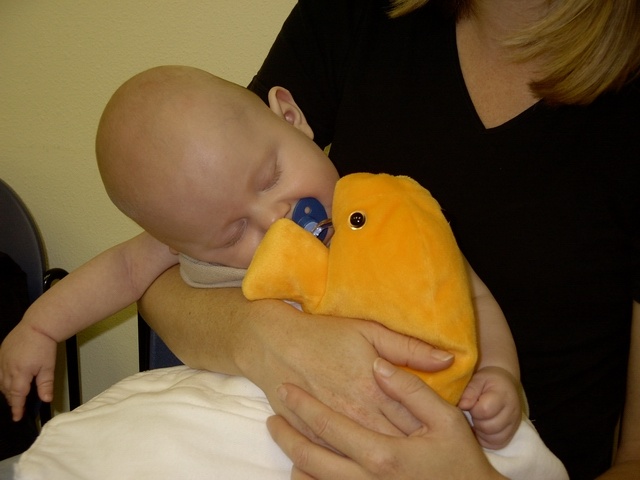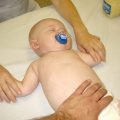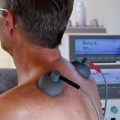Table of Contents
Torticollis baby happens when there’s a shortening of muscle or stiffness that causes an inclination of the head on the side of the rotated and affected muscle to the other side. It’s very important to mention that most babies with torticollis usually recover faster, and it has less impact on the newborn’s motor development. Torticollis baby is a disorder that needs to be immediately consulted to the physician especially if you are aware that your child suffers from plagiocephalies or commonly known as stiff neck. Torticollis baby is when there’s a stiffness and/or a shortening of a muscle of the neck that causes an inclination of the head on the side of the affected muscle and rotated to the other side.
It is important to mention immediately that most babies with torticollis are seen early more recovery is fast and less torticollis can have an impact on the baby’s motor development. Torticollis baby is something that needs to be consulted promptly as soon as you know that your child has a stiff neck or plagiocephaly.
Torticollis Baby: Possible Causes
The causes of Torticollis baby are still quite unknown. However, many experts said that there could be a few reasons why it happens to newborns. One of the reasons is the improper positioning of the baby while he/ she are in the mother’s womb. If the baby is large or those babies born in a seat that wasn’t able to return usually have greater risk in developing a stiff neck as the pregnancy period ends. The use of suction cups or forceps to childbirth can cause a stiff neck due to bleeding which is then caused by the traction on the sternocleidomastoid muscle. Another factor is that many babies develop a flat head and this could be due to them resting their head on the mattress for long hours.
Torticollis Baby: Possible Consequences
Torticollis brings the baby to have the head very often turned to one side. This makes it hard to completely turn the baby’s head to the other side. If the baby keeps his head turned from one side to another constantly, this could cause deformity of the skull which is medically known as plagiocephaly.
Stermocleidomastoid Muscle
If the sternocleidomastoid muscle decreases in muscle strength then it may be linked with torticollis baby. This only means that the newborn doesn’t have enough strength to completely make his head get into a vertical or straight position which means that there’s an inclination of the head that could be present in all head positions. It should be noted that a newborn should always use one of its hands more frequently than the other until it reaches two years old. At two years old, one hand will establish its dominance and it’s from this moment that we can determine whether the baby is right-handed or left-handed.
Torticollis in babies can also bring some form of asymmetry on their motor development during the period of its development since the muscles won’t have the same flexibility or the same strength of both sides of the body. For instance, it is possible that the baby only turns back to the belly, rotate it, or he/ she can only sit on one side and rises standing with one leg.
Torticollis Baby: Signs and Symptoms
Signs and symptoms include difficulty turning their head from side to side; most can only keep their head turned only to one preferred side; may tilt their head in one direction, and the baby only prefers certain head positions. Unfortunately, some babies with torticollis will develop a flat head due to laying in one direction all the time.
Torticollis Baby: Prevention
Some babies develop torticollis in their mom’s womb but you can help prevent it by strengthening the neck and back muscles of the baby which can then aid in typical motor development. It reduces the pressure that’s placed on the child’s head especially when they only prefer to lie in one position which often leads to the flattening of their head.
Babies should be placed on their tummies for at least 5 to 10 minutes throughout the day. However, this should be done when the baby is comfy and awake. Keep in mind that babies should always sleep on their backs. What you can do is to also alternate the arm in which you hold the newborn particularly during feeding time. You can also try switching which side their head is facing whenever you change the baby’s diaper inside the crib. You might also want to use toys so that the baby’s attention will look on the direction where you want them to.
Torticollis Baby: Treatment
If you think your baby has torticollis, it’s best to have a regular checkup and talk about it to your child’s doctor so that it can be addressed as soon as possible. Torticollis baby mostly begins when the baby is two months old, and it becomes apparent at four months. The doctor will most likely refer your baby to see a pediatric physical therapist.
You can expect the physical therapist to have your baby go through a thorough evaluation, and this is how they will determine the right treatment based on their findings. Treatment will most likely consist of the parents being educated on the right position of the baby’s head throughout the day in order to facilitate improved range of motion and reduce the risk of head flattening. Your physician will also provide gentle stretches and also do some activities that can help increase motion and also reduce the tightness of muscles.
Treatment
Treatment usually includes the gentle application of stretches as well as some techniques on how you can carry and breastfeed your baby. You will also get educated on how to properly let your baby sleep to encourage him/ her to look at the restricted side. Some physical therapists apply the gentlest techniques to mobilize or massage stiff baby joints and muscles. You don’t have to worry because they are trained to do just that. The methods are firm but still light since babies are still malleable at this stage, which means that your child will not feel any discomfort or pain during treatment. Torticollis baby recovery period is seen after one to two sessions if it uses manual therapy techniques.
Other sources say that improvements may occur after a few months, while full neck movement can last for about a year just from positioning and stretches alone. However, if the condition of the baby doesn’t improve by that time, then perhaps surgical correction is needed.
Unfortunately, if torticollis baby is not treated immediately, the muscle can become permanently tight and as mentioned before flattened skull and an asymmetrical face can result if the head is always tilted to one side. Another important fact is that about 20% of babies with congenital torticollis also have hip dysplasia and club foot so this needs to be assessed by a Pediatric Physiotherapist.
When you leave the hospital with your newborn, you leave with information on all kinds of topics including how to give them a bath, how to feed them, how to track wet and dirty diapers, car seat safety, vaccinations, proper sleep habits, etc. It can feel very overwhelming at times with all of this new information but there is another topic to keep on your radar when it comes to infants which is torticollis baby.






 I love to write medical education books. My books are written for everyone in an easy to read and understandable style.
I love to write medical education books. My books are written for everyone in an easy to read and understandable style.
